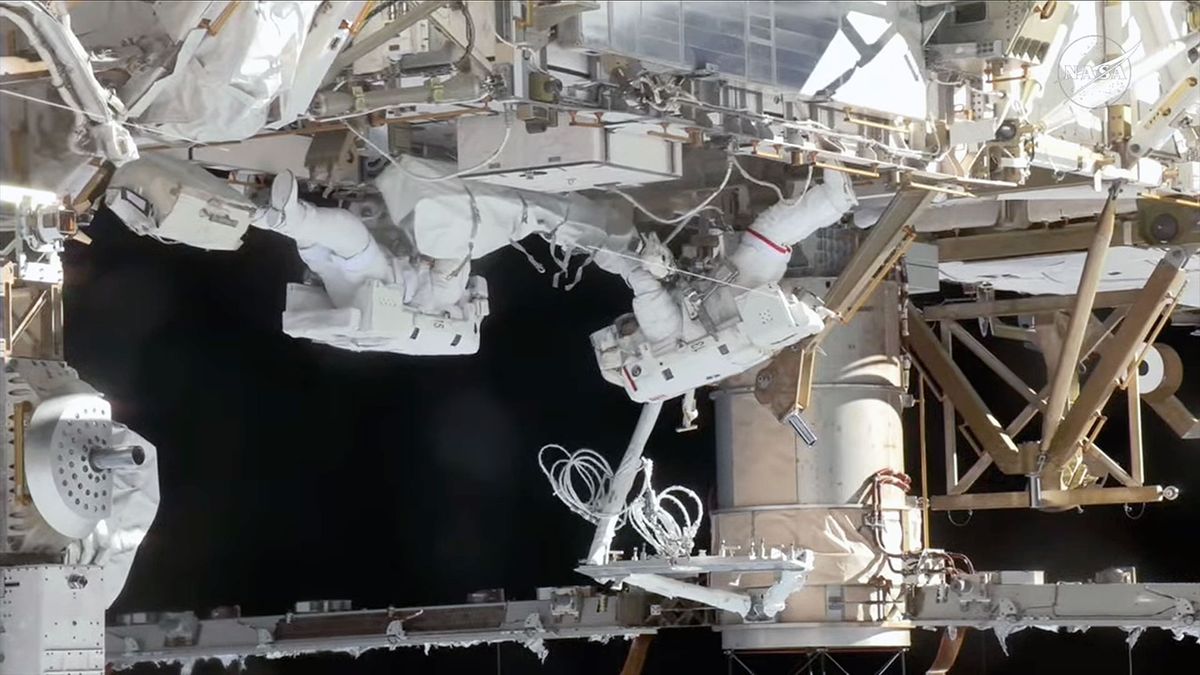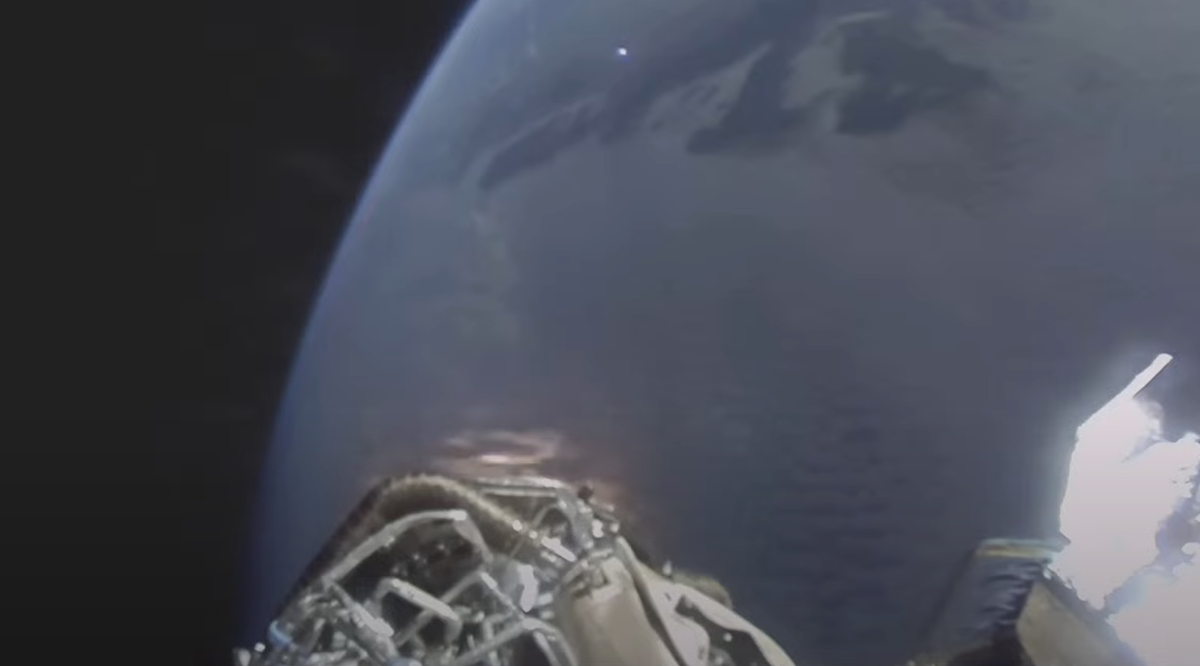ARTICLE AD BOX
Low Earth orbit (LEO) is on the verge of a major expansion in crewed operations, but the proliferation of space debris could threaten these missions and create safety hazards for astronauts.
With the International Space Station (ISS) set to retire by 2030, a new generation of commercial space stations, such as Starlab, Orbital Reef, Axiom Station and Haven-1 are preparing to take its place. Meanwhile, SpaceX’s Crew Dragon continues to ferry astronauts to the ISS and other destinations, with missions like Fram2 and Axiom Mission 4 demonstrating the wide range of possibilities. Even Starship may eventually be used as an orbital destination for research and development.
However, space junk will pose a significant challenge to this next phase of human spaceflight. Over half of all collision risks in LEO are caused by debris, which includes everything from defunct satellites and rocket bodies to smaller fragments created by breakups, explosions and anti-satellite (ASAT) tests. In the last five years, the ISS has had to perform 14 collision avoidance maneuvers because of this debris.
As private space stations and crewed missions become more frequent, the risk of a serious collision increases. Addressing this problem will require a multi-pronged strategy for reducing dangerous debris, ranging from preventing new fragmentation events to reducing launch-related debris, improving detection of sub-10 centimeter objects and deploying active debris removal technologies.
The future of human activity in LEO depends on our ability to keep the orbital environment safe. Without immediate action, the very infrastructure meant to advance space exploration could become its greatest hazard.
Preventing fragmentation events
Unplanned satellite breakups remain one of the most significant contributors to harmful debris fields in LEO. Many of these events stem from predictable failure modes, including power system anomalies, propulsion system failures and structural fatigue.
These issues must be addressed through more rigorous satellite design and operational steps across its lifecycle to reduce the risk of failures in orbit.
A top priority is passivation. Although NASA-STD-8719.14 mandates passivation for U.S. missions, operators should adopt more aggressive protocols that include autonomous passivation as a fail-safe mechanism in case comms are lost with ground control. Other efforts, such as propellant depletion valves, battery disconnect circuitry and software interlocks that prevent latent stored energy build-up after the spacecraft reaches end-of-life, should be utilized to further reduce the risk of fragmentation.
Power system anomalies (especially battery explosions) continue to be an under-addressed source of in-orbit fragmentation. Lithium-ion batteries, if not sufficiently insulated, monitored and designed for outgassing, are susceptible to catastrophic failure. Missions like Defense Meteorological Satellite Program Flight 13 have demonstrated how battery rupture events can sometimes result in long-lasting debris fields.
Beyond design, operators should also commit to lifecycle risk reduction, including more robust end-of-life planning, fault tree analysis and ground operator training for anomaly response. Post-mission disposal verification should be treated with the same rigor as launch readiness.
Mitigating launch debris
Frequent launches are another significant contributor to space debris. As the launch cadence surges, more effort is needed to ensure these routine missions aren’t leaving dangerous objects in orbit.
Inconsistent global standards allow many upper stages to persist in orbit for years if not decades. While U.S. commercial launch providers — led by SpaceX and Rocket Lab — have improved deorbit rates, more work still needs to be done. In 2023, The Federal Aviation Administration proposed a rule that would require companies to deorbit their launch vehicle upper stages within 25 years. However, given the dramatic rise in launch activities, a faster deorbit timeline of five years or less is needed to meaningfully improve orbital safety. It is also critical that other governments — particularly China, Russia, the European Space Agency, Japan and India — take more stringent efforts to reduce upper-stage debris as well. China, in particular, is showing an alarming trend with the launch of its megaconstellations. A recent analysis showed that abandoning the upper stages of the Chinese megaconstellation launches in orbital altitude could exacerbate collision risks for over a century.
Launch providers should also ensure that upper stages are passivated to prevent explosions and design components burn up completely upon reentry. Deployment systems should be engineered to minimize the release of secondary debris, such as bolts and covers. It’s also important to share detailed orbital decay predictions and post-mission disposal telemetry to improve space traffic coordination and transparency.
Better monitoring for small debris
Debris objects smaller than 10 centimeters are challenging to track with current radar and optical sensors. This creates a lot of uncertainty for space operations, as there are millions of these objects in orbit.
At typical orbital velocities of around 7.8 kilometers per second, these small objects can cause significant damage in a collision. Objects just below 10 centimeters, with a mass of around 0.5 kilograms, carry a kinetic energy level comparable to 3.5 kilograms of TNT. This could puncture pressurized modules and cause catastrophic damage to human habitats in orbit. Even much smaller objects can be extremely harmful. A one centimeter fragment, weighing approximately 10 grams, carries the energy of a hand grenade and could penetrate or damage any exposed equipment. In 2016, a small object estimated to be a few thousandths of a millimeter across caused a sizable chip in the window of the ISS’s Cupola module.
Several efforts are now underway to enhance our ability to track small debris. Ground-based radar networks are beginning to improve sensitivity, but still struggle to detect sub-10 centimeter debris, particularly at higher inclination orbits like polar and sun-synchronous paths. Expanded networks of optical tracking stations (capable of deep exposure imaging and multi-angle triangulation) are also being developed, though deployment remains limited. More effort should be put on improving in-situ observation sensors and algorithms to detect and maintain custody of small debris objects.
Accelerating investment and collaboration in these efforts is critical to reduce uncertainty, improve catalog completeness, and better predict collision risks.
Robotic cleanup
More than 3,000 defunct satellites and over 2,000 rocket bodies remain in Earth’s orbit, many of them large enough to trigger catastrophic collisions.
Active debris removal (ADR) technologies must move beyond demonstration toward operational deployment. Capture mechanisms such as net systems, robotic arms and magnetic docking technologies have reached Technology Readiness Level 6+ in multiple programs. Astroscale’s ELSA-d, NASA’s Active Debris Removal Vehicle (ADRV), and ESA’s ClearSpace-1 show the potential for targeted debris rendezvous and removal.
The U.S. government should provide procurement incentives for missions that remove high-risk debris or test ADR platforms in orbit. A “debris-as-a-service” model, underwritten by NASA or the Space Force, could help close the commercial viability gap.
As we head into a new phase of orbital activity, crewed operations will be constrained by a deteriorating operating environment unless significant changes are made. Uncontrolled debris objects trigger tens of thousands of daily conjunction events in Earth’s orbit, many of which require active maneuvering to avoid. In a typical 72-hour period, the ISS faces half a dozen conjunction events with miss distances below 15 kilometers, well within its 200 kilometer safety zone.
Without targeted action, routine operations around commercial space stations, research platforms and transport vehicles will become increasingly challenging.
Siamak Hesar is the co-founder and CEO of Kayhan Space. He holds a Ph.D. in Aerospace Engineering Sciences from the University of Colorado, Boulder. He has supported NASA missions in the past as a flight dynamics engineer and space situational awareness specialist. Prior to Kayhan Space, Siamak led several software development efforts focused on collision risk assessment and mitigation, and autonomous onboard navigation. He is passionate about space and wants to do his part to ensure a sustainable Earth orbital environment for future generations.
SpaceNews is committed to publishing our community’s diverse perspectives. Whether you’re an academic, executive, engineer or even just a concerned citizen of the cosmos, send your arguments and viewpoints to opinion@spacenews.com to be considered for publication online or in our next magazine. The perspectives shared in these op-eds are solely those of the authors.

 6 hours ago
4
6 hours ago
4







 English (US) ·
English (US) ·